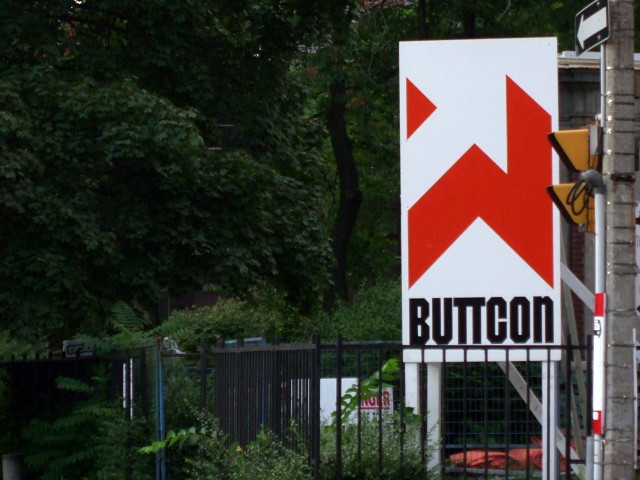
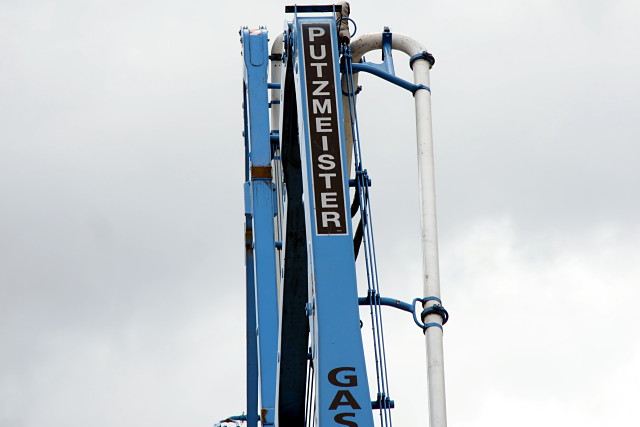
My memory may be a little hazy, but I swear that when I went to ButtCon in ’99 (for business, you understand), a guy named Putzmeister gave the keynote.
In other news, some companies have the strangest names.
Random Wanderings and Wonderings


My memory may be a little hazy, but I swear that when I went to ButtCon in ’99 (for business, you understand), a guy named Putzmeister gave the keynote.
In other news, some companies have the strangest names.
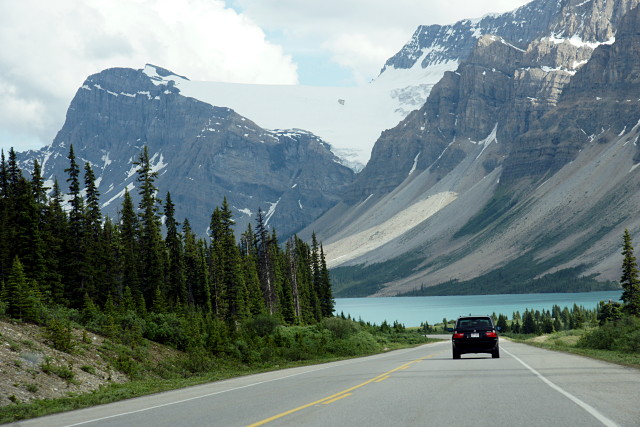
After our couple of days in and around Jasper, we headed south down the Icefields Parkway toward Lake Louise. I’ve been on some really nice drives, including the Pacific Coast Highway between San Francisco and Monterey, and the Icefields Parkway is by far the best I’ve done. Rarely do I actually want to pull over at every single lookout, but they were hard to resist on this trip.
When you’re driving down the Icefields Parkway, you have to make a decision: are you driving to your destination on a rough schedule, or are you taking pictures of all of the interesting things along the way? You have to make this decision whenever and wherever you’re on vacation, but Jasper is so filled with photographic opportunity that the choice must be made over and over again. I sometimes need to remind myself that I’m on vacation and not on a photographic expedition hunting for the perfect exposure of the most awe-inspiring vista. I know that it can be boring (at best; supremely annoying at worst) to travel with someone who’s constantly setting up a tripod, micro-adjusting focus and frame, running around with a light meter, and waiting in one spot for ten minutes for the wind to die down or the light to be just so. This picture is a perfect example of the tension between enjoying a relaxing vacation and satisfying a photographic vision:
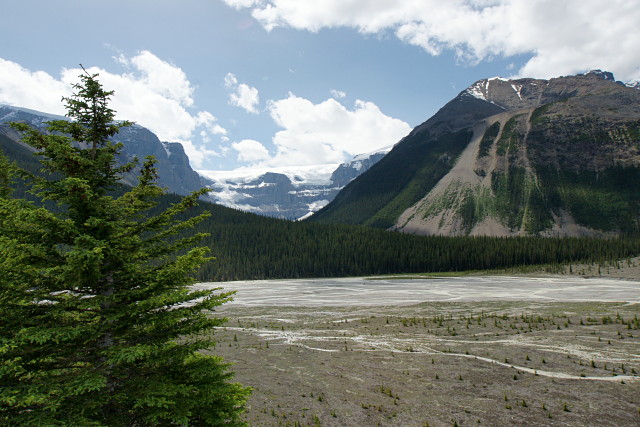
There was a very large raven sitting right on the top of that tree at the left. Several of them, in fact. One would fly away and another would take up the perch immediately afterward. So I got into position, tree in the foreground, mountain in the background, broad valley in between, a bright blue sky with fluffy white clouds filling in the blanks. Took a couple of test shots and selected my preferred exposure. But now that I was in place with the viewfinder pressed to my eye, finger on the shutter button, and everything framed perfectly, the ravens were all hanging out elsewhere: in the parking lot, in another tree, on the rocks, in the sky, anywhere but sitting on that damned tree. If I’d been here alone, I would have stood there and waited half an hour for a raven to return to the top of the tree and give me the picture I had already composed in my head. But looking over at Risa getting restless at the car, I knew my time was up. Fifteen minutes at a single lookout was enough. So there’s the picture, and not a raven in sight.
But that’s okay, because in Jasper, there’s always something else around the next corner. And Risa didn’t know it yet, but we were on a mission to trek out onto the Athabasca Glacier. All the whining in the world didn’t get me into one of those icemobiles when I was nine years old, but now that I’m old enough to pay my own way, nothing’s going to stop me. That’s the best part about growing up.
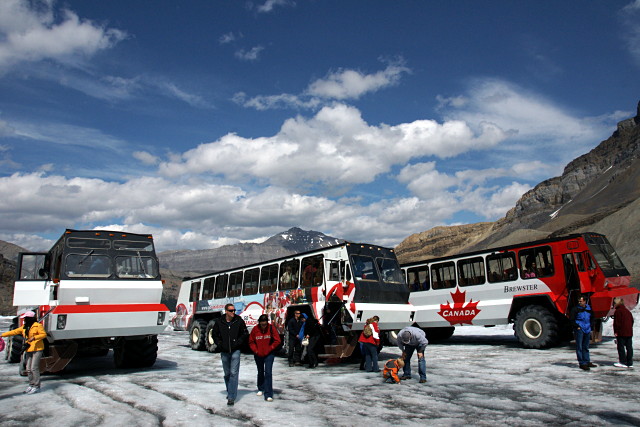
So onto the glacier we went. It was the perfect cap to an amazing drive through the mountains. There’s more about the glacier in the inevitable gallery at the end of this post. Suffice to say that it was impressive in every way.
Don’t tell Risa, but when we were planning our Western trip, I’d seriously considered trying to include some kind of cycling component between Jasper and Banff. If the Icefields Parkway is supposed to be a really nice drive, it should be an even better ride, no? Well, possibly. But passing dozens of riders on supported tours slowly grinding up one hill after another made me glad that I’d silently shelved the thought. Oh, I’m sure that I could have finished the ride, but I doubt that our marriage would have survived the 300 km trek.
On to the gallery and more observations.
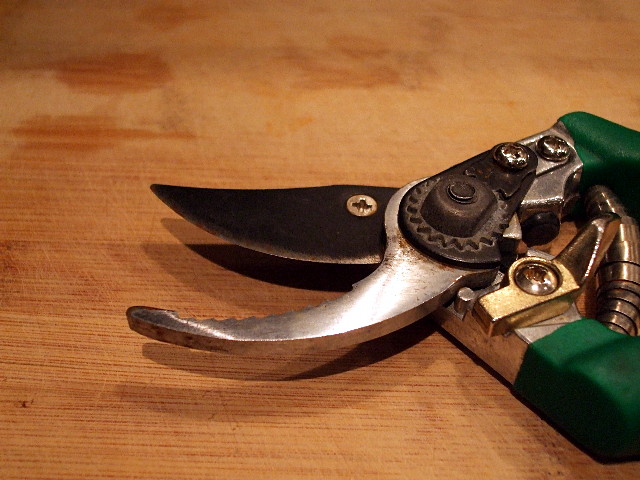
I’m never sure whether these bypass pruners are laughing with me or at me.
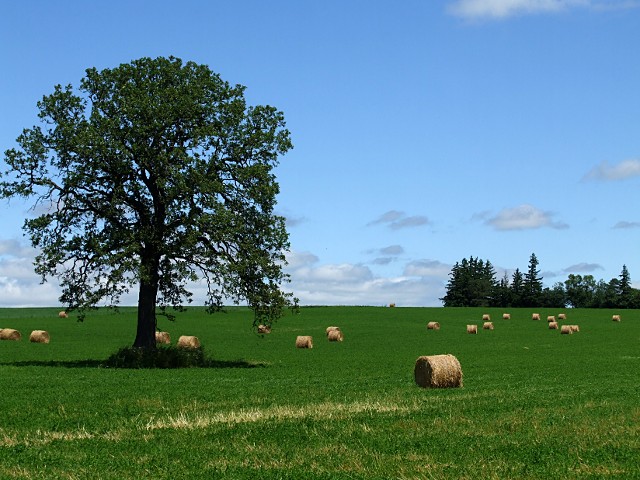
How long does it take to ride up Kennedy Road to Lake Simcoe? Almost two months, apparently. As I mentioned before, it took three attempts (and two bikes) starting at the end of June for me to complete this trip. Kennedy Road is an interesting contrast to Warden, just two kilometres to the west and my more usual route north: Kennedy seems much more wild, with fewer farms and estate houses, and more forest and overgrown meadows. Kennedy also has less industry than Warden, fewer golf courses, and less traffic. The downside is that it’s also somewhat poorly maintained, with many kilometres of the road through East Gwillimbury cratered with potholes and only haphazardly patched in a way that makes it rather bike unfriendly. Still, it’s a very peaceful ride. The landscape feels less constricted than on Warden, with several sweeping vistas that you don’t see from the other northbound routes.
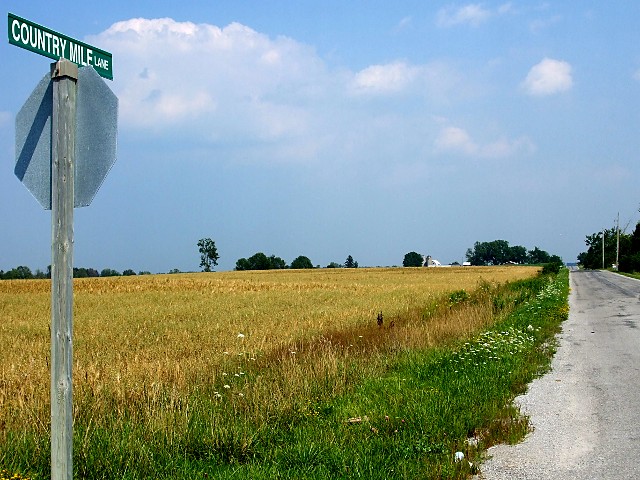
One of the things that I like most about riding out of the city is watching streets take on completely different characters. Two of my formative years were spent not too far from the foot of Kennedy Road in Scarborough, where it’s a sleepy residential street. Most people are familiar with the big box hell of Kennedy Road from Lawrence to Sheppard. That’s followed by the suburban thoroughfare of northern Scarborough and Markham, which gives way to a quiet concession road and a lazy country road before finally ending up at a beach in a little cottage area. It may all be one street, but it has at least eight distinct phases from beginning to end.
Before these rides, the only part of Kennedy north of Sheppard that I’d ever ridden on was the 400 or so metres between Ravencrest Road and Mount Pleasant Trail, where it forms part of a nice big diagonal shortcut from Woodbine to McCowan on the way to Sutton.
Read on for the full gallery treatment of my ride up Kennedy Road.
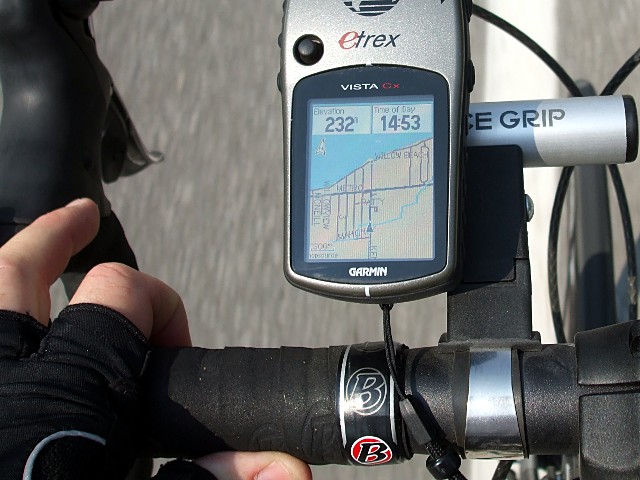
Three and a half hours after setting out from home on Sunday, I was rolling up to Willow Beach on Lake Simcoe. It’s pretty underwhelming as beaches go, but that didn’t stop me from celebrating by taking my shoes off and wading around in the cool water while I ate my lunch. The ride back home was into a full-on headwind, destroying the usual downhill advantage of the ride back to Toronto. This was the third time I’ve tried this trip this summer. The first time I turned around after an exhausting traversal of a muddy, overgrown trail, but I wasn’t really expecting to make it all the way up that day anyway. My second attempt was cut short by time constraints just 20 km from Lake Simcoe.
It wasn’t the first time I’ve ridden up to Lake Simcoe, but it was the first time that I’ve gone all the way up and back in a single day. The other times I’ve made the trip, I either stayed overnight at Sibbald Point or cheated by driving over the Oak Ridges Moraine to start and finish my ride near Newmarket. The round trip was 154 km, with seven hours in the saddle and about an hour of breaks. I just didn’t have it in me to ride around Toronto for another twenty minutes to make it a full century. Still, it was my longest ride of the year by about 35 km and my longest overall since riding to Toronto from Niagara Falls a couple of years ago.
I really like the challenge of pushing myself on a long bike ride, but I don’t think I’ll ever be ready for a Hairshirt. Still, I feel that a 200 km ride is within reach. Probably not this year, but maybe next.
Two important lessons from this ride:
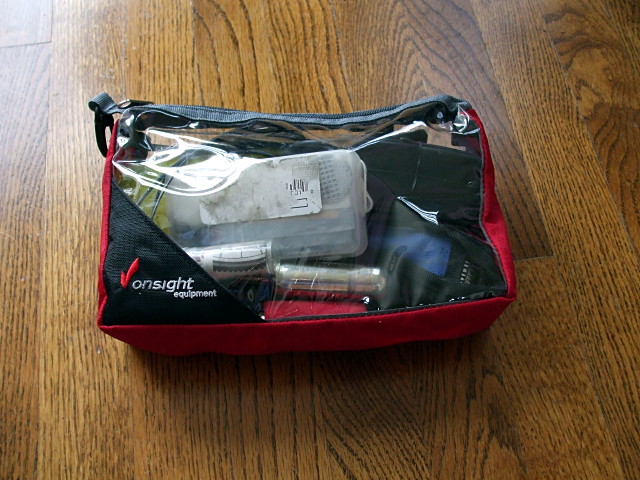
I only started cycling longer distances about 8 years ago, after a lifetime of confining myself to Toronto’s streets and trails. Breakdowns weren’t a huge issue in the city because in the worst case, I was always within an hour’s walk of the subway. But as I started riding farther and farther out of the city, it became increasingly obvious that I needed to be prepared for flats and other common bike ailments. This is especially true because my longer rides are almost always solo.
I started with the bare minimum of a patch kit, tire levers, and a pump before gradually adding items based on actual problems that I’d had or encountered other people having. Eventually, I decided to package it all up into a bag that I could just move from mountain bike to road bike. And then I just built up three separate kits: one each for my commuting, mountain, and road bikes. They each have slightly different requirements and it was easier in the end to have dedicated kits for each than to repack a single kit for each trip.
The interesting thing I’ve found about having a kit is that I use it to help others more often than I need it myself. I’ve helped other riders get back on the road from problems as simple as a flat tire and unexpected as loose handlebars. I always stop to ask cyclists at the side of the road if they need help. Even if they wave me off, I’ll frequently hang around until they finish the repair, offering moral support if nothing else.
Let’s take a look inside my kit.
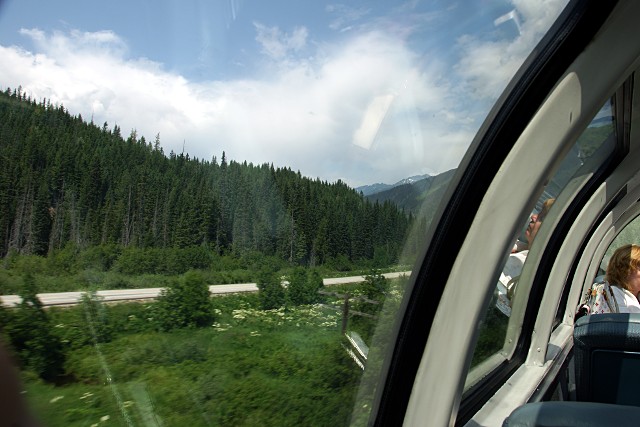
Leaving Vancouver behind, we took the VIA Rail Canadian to Jasper. I love trains, but even I have to admit that spending more than 18 hours on a train is pushing my limit. At least one family in economy with us was going all the way to Toronto, a four-day journey. My head hurts just thinking about it.
I’d happily take the train across the country, but I could never do it all at once. I’d get a 30-day pass (or, thanks to VIA’s somewhat limited fare structures, two or three 12-day passes) and hop across the country a few hours at a time, spending a day or two here and there to explore. Four days all at once? I can’t imagine.
Still, I highly recommend the train trip from Vancouver. The train crosses much of the B.C. interior at night, and spends most of the following day crisscrossing the Fraser River and North Thompson River valleys and eventually climbing over the Yellowhead Pass into Alberta. By my count, our train had at least 17 passenger cars (including 6 cars with observations domes), making it by far the longest train I’ve ever been on. The observation car nearest to us was never more than half full when we went up there. My advice: try to get a good night’s sleep at the beginning of the voyage and then grab a good window seat for the rest of the day, whether in the dome car or your regular passenger car. If you can, shell out for a sleeper compartment; it’ll cost twice as much, but you’ll be at least three times happier in the morning.
Jasper, the National Park, is nothing short of awe-inspiring. You could probably spend the entire summer there and not run out of places to go or things to see. Jasper, the town, is tiny and reminds me a lot of southern Ontario tourist towns: the main drag is so focused on serving tourists that I’m always left wondering where local residents shop or eat. I can’t imagine that locals spend $100 for a middling dinner for two at Evil Dave’s or $20 for souvenir underwear.
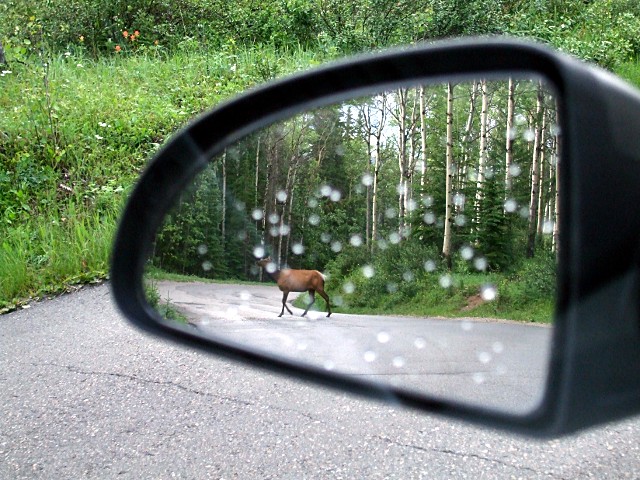
I love little local museums, and the Jasper-Yellowhead Museum didn’t disappoint. The walkthrough display chronicling Jasper’s history is so chock-full of Banff-envy that it reads like it was penned by a spurned lover. “Banff may be bigger and better, but we’re happy that we’re small and unappreciated! We swear!” While the museum spends a lot of time disparaging the development and popularity of Banff and extolling the quiet virtues of still-wild Jasper, it’s actually bang-on in making the comparison. Wildlife was abundant in Jasper, with appearances by too many elk to count, as well as some deer, a moose, a black bear, and countless ravens that seemed twice as big as their urban cousins in Vancouver.
Just about the only thing I remember about Jasper from when I was there as a kid thirty years ago was the preponderance of trailers and motorhomes. It’s still largely the same, but at least half of them these days are rentals.
Anyway, read on for the obligatory gallery and more observations.
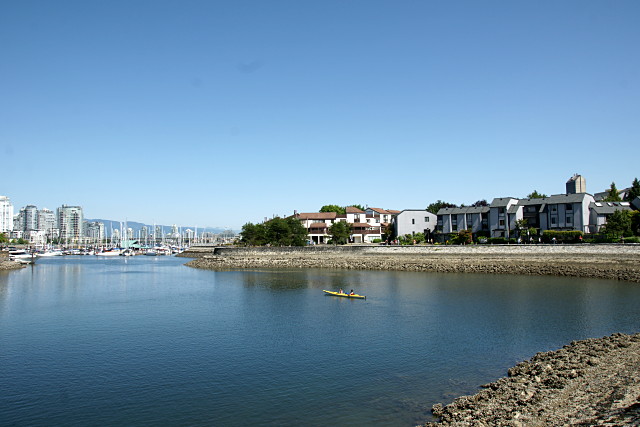
The best thing about taking a vacation is coming back home. Don’t get me wrong, I always enjoy exploring beyond the normal boundaries of the Greater Dodgeville Area, but there’s just something about Toronto that really makes me appreciate coming back to it.
Risa and I were visiting family in Vancouver before scooting over to Jasper and Banff for a few days. It was a varied couple of weeks for transportation: in all, we flew, drove, walked, hiked, biked, and canoed, and rode the train, the bus, the icemobile, the ferry, and horses: something different almost every day.
This was the third time I’ve been to Vancouver in the last five years, and my first trip to Alberta since I was nine years old. I’ll spare you the typical vacation slideshow here, but I thought I’d share some random Dodgeville-style observations from each place we visited, starting with Vancouver. Banff and Jasper will follow in subsequent posts.
Risa and I are on vacation out west. I used the occasion to climb Grouse Mountain, one of the peaks overlooking Vancouver. The interesting thing about Grouse Mountain is that you can take public transit to it: a quick ferry and bus ride from downtown Vancouver gets you right to the base of the mountain for $3.75. Ah, for TTC and GO service like this to some of Toronto’s far-flung attractions. Grouse Mountain isn’t huge by mountain standards, but it’s still a lot bigger than anything I’ve climbed in Toronto. I’ll have more random thoughts about Vancouver in a later post or two, but for now, here’s a gallery of my climb up the Grouse Grind.
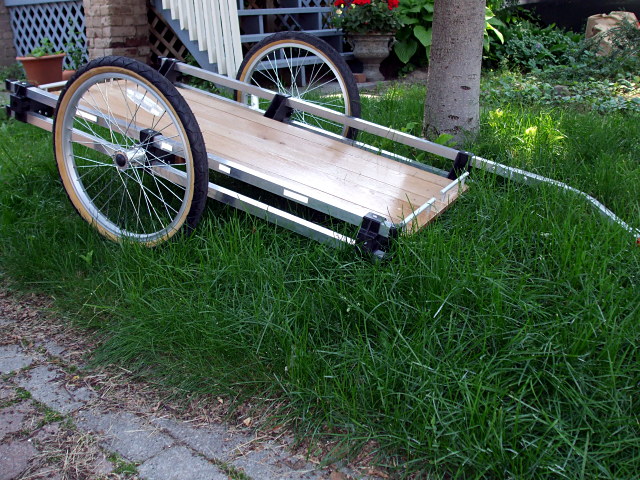
I mentioned a couple of months ago that I was looking for a new flatbed trailer to augment my BOB Yak for use in the city. Armed with my requirements, I headed down to Urbane Cyclist, fully expecting to ride away from the store with a new Burley Flatbed or equivalent. But after considering the options and talking to the staff about my needs, they recommended that I either get a DIY trailer kit from Wike and build my own trailer, or call Wike and get a custom trailer built to my specifications. I opted for the former, and am really happy with the result.
It’s done duty twice so far: its inaugural trip was ably carrying three Rubbermaid totes crammed full with much of the equipment and materials required for the Ward 29 Bikes meeting two weeks ago, and it pulled 80 lb of cat litter home last weekend. It’s big enough to be used for flats of flowers, bags of soil, and many other large or awkward loads that would have overwhelmed or overflowed my Yak.
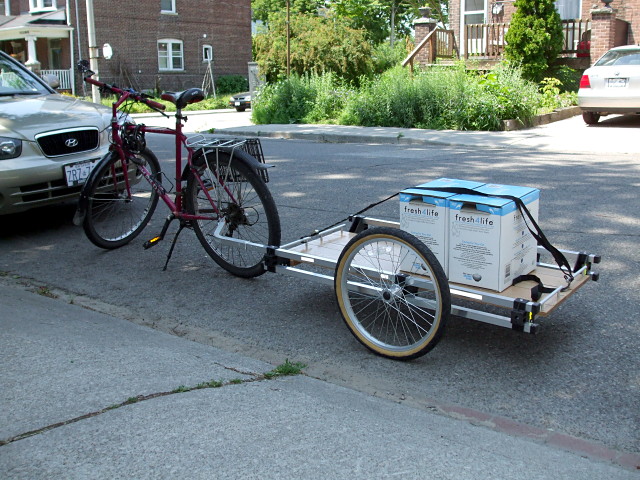
Read below the fold for more details about the construction.
Read More …